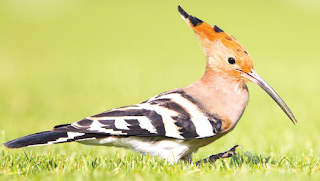Climate Change Shifts Migration Patterns of Eurasian Birds in Kashmir Wetlands
In the intricate ecosystem of Kashmir's wetlands, a silent transformation is underway as climate change reshapes the migratory journeys of Eurasian birds. This phenomenon, meticulously observed by experts, underscores the delicate balance between nature's rhythms and human-induced alterations.
Director Nadeem Qadri, stewarding the Wetland Research Centre at the Wildlife Conservation Fund (WCF), reflects on the winter's anomalies. A prolonged dry spell coupled with unseasonably high temperatures has disrupted the traditional calendar of avian arrivals and departures. In this altered landscape, the once familiar patterns of migration are evolving.
Traversing the Central Asian Flyway (CAF), migratory birds embark on a timeless journey, finding respite in the wetlands scattered across Kashmir. Yet, this season, their stay at these sanctuaries has been curtailed. The warmth of the changing climate hastens their onward flight, truncating their customary sojourns.
Initially, the wetlands of Pampore welcomed a multitude of avian visitors, their numbers a testament to the region's ecological richness. However, the capricious nature of climate change has spurred a mass exodus. Flocks that once graced these shores now seek refuge in distant lands, their departure leaving a void felt by both residents and researchers alike.
Tariq Ahmad, a vigilant observer of nature's rhythms, laments the dwindling presence of migratory birds in the wetlands of Pampore. His observations echo the sentiments of many who witness the subtle shifts brought forth by environmental upheaval.
Amidst diverging accounts, Sajid Farooq, Ranger of Lakes and Wetlands in Pampore, stands firm in his assessment. Despite the flux in bird populations, he remains steadfast in his conviction that the wetlands retain their allure, a haven for avian guests seeking solace amidst uncertainty.
As the debate unfolds, one truth remains self-evident: the impact of climate change transcends borders, reshaping ecosystems in its wake. In the hushed whispers of rustling reeds and fleeting shadows of winged travelers, lies a poignant reminder of nature's resilience in the face of adversity.
Frequently Asked Questions (FAQ)
How is climate change affecting the migration patterns of Eurasian birds in Kashmir? Climate change has disrupted the traditional migration patterns of Eurasian birds in Kashmir by altering the timing of their arrivals and departures and shortening their stay at traditional halt stations.
What is the Central Asian Flyway (CAF)? The Central Asian Flyway (CAF) is a migratory route that Eurasian birds follow, traveling from various European and Asian countries to destinations in Kashmir and beyond.
What impact does climate change have on the wetlands of Pampore? Climate change affects the wetlands of Pampore by influencing water levels, temperatures, and other environmental factors crucial for the survival of migratory birds and local ecosystems.
How do experts monitor bird populations in Kashmir's wetlands? Experts monitor bird populations through systematic observations, bird counts, and collaborative efforts with local residents and organizations involved in wildlife conservation.
What efforts are being made to mitigate the impact of climate change on migratory birds in Kashmir? Efforts to mitigate the impact of climate change on migratory birds in Kashmir include habitat restoration, conservation initiatives, and raising awareness about the importance of preserving wetland ecosystems.
#ClimateChange, #EurasianBirds, #KashmirWetlands, #MigratoryBirds, #EnvironmentalConservation

